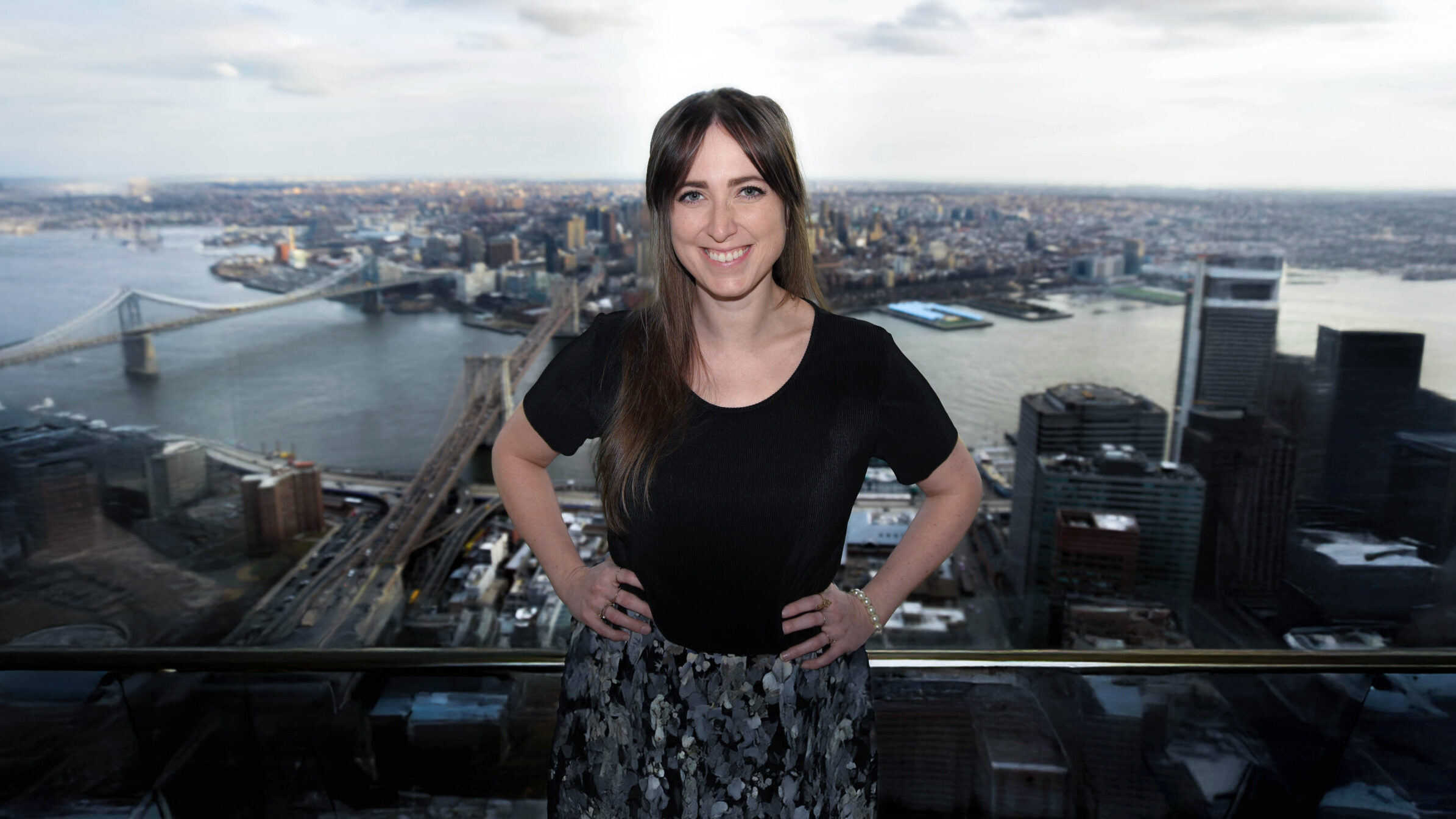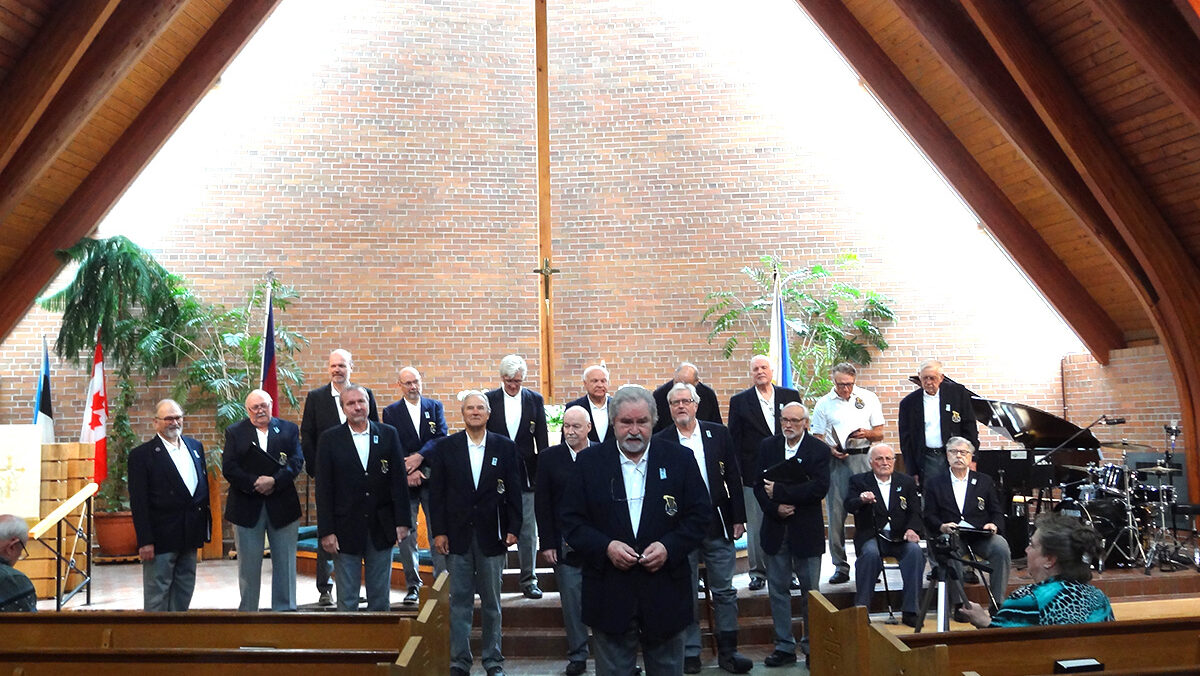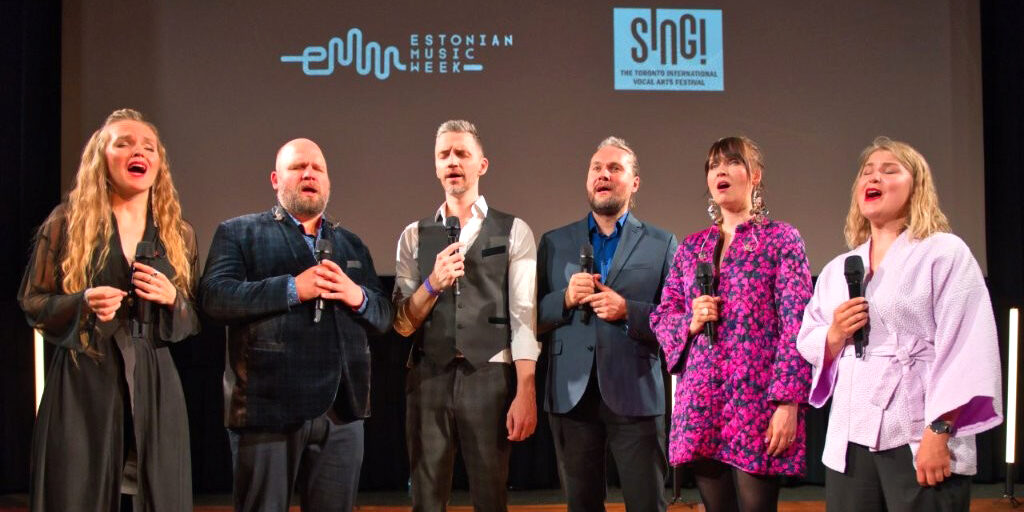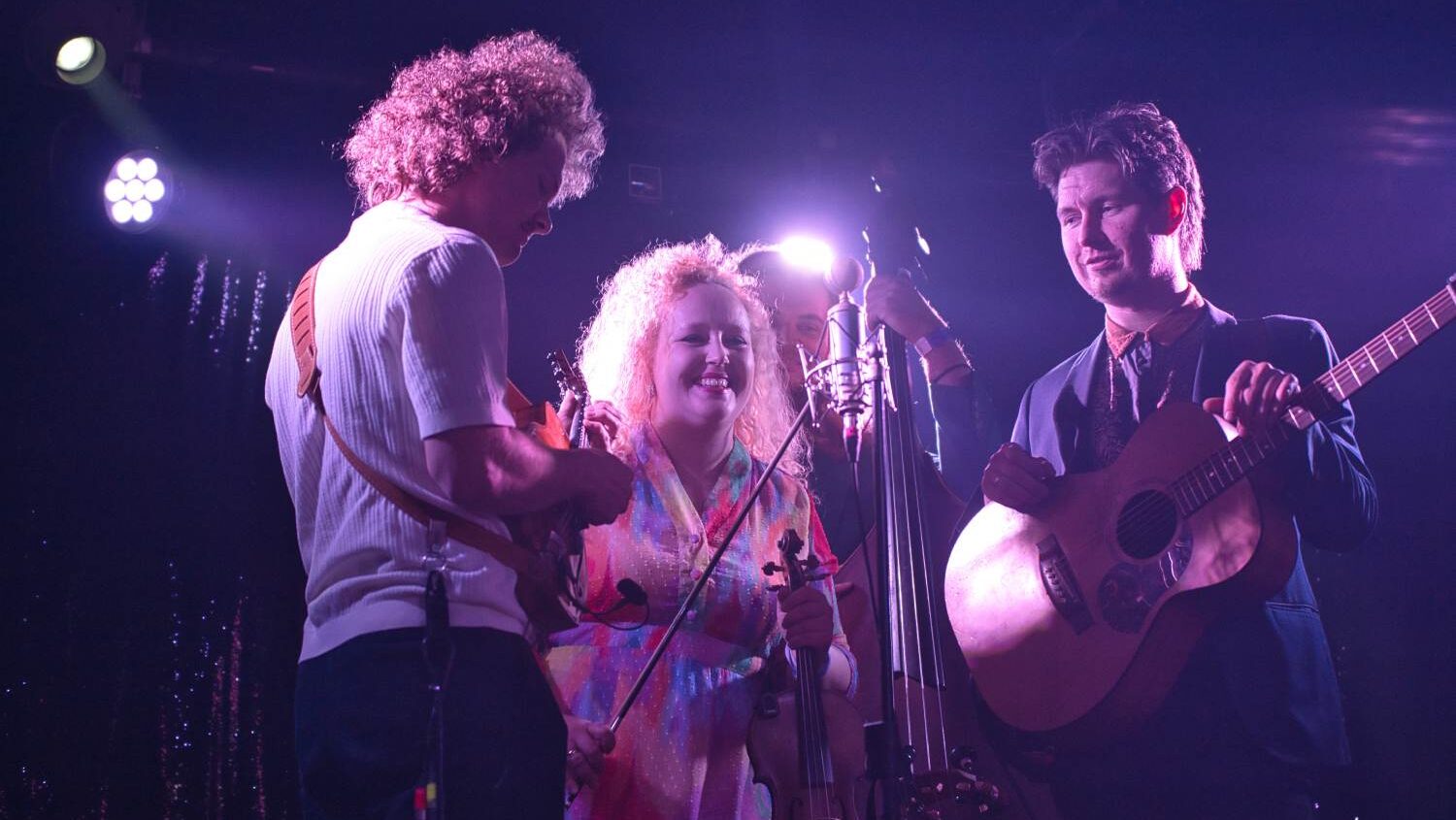Find our conversation below, where we chatted about her journey as an artist in New York, what it's been like to build NANY, sustainability, and more details about True North.
Can you talk about your path as an artist?
At some point in early adulthood I left Finland to work for an international travel agency, which took me to live in a lot of different places. I think in total I've lived in six different countries. Since you couldn't really take things like theatre or dance with you, I took music, because all I needed was a notebook and guitar. During those seven years of moving around, music was just the one constant thing with me at the time.
So then, when it came time to graduate from the nomadic lifestyle and I was thinking about where in the world I would want to live, New York seemed like the obvious choice for me. I had been to New York once before, when I was fifteen, just for a few days, but there was something about it that really called out to me.
A couple years after I had arrived, I had this little network of people and got really acquainted with this incredible indie music scene—an underground, dive bar kind of indie scene—and the incredible array of talent that is compressed in the small part of New York I was in.
Where do you find inspiration for your music?
Absolutely everywhere. I'm a very lyrical person. Very often I will come across a phrase or an idiom or something like that, and I'm just like, “Oh, that would make an interesting song.” I also think that stories inspire stories, so I will write based on a film that I saw, or a book that I read, or a poem, or a real person's story that they told me. For the majority of my life, I’ve written completely in my head—meaning that I don't necessarily even need to be by a piano or by a guitar in order to practically finish a song. So a lot of the time, I will hear all of the instrumentation, everything, in my head already. It’s like a ready-made package. And then all I have to do, once I get to the studio or wherever it’s becoming realized, is really just put it down on paper so that it can be recreated by other people—whether it’s an instrumentalist or a producer.
“A couple months ago, I put a video of that song with some imagery from the movie on Instagram, and a couple months ago, the author of the book that the movie is based on had liked that video. I was like, ‘what a wonderful full-circle moment.'”
(Petra Jasmiina)
There's actually a good example of this. A couple years ago I saw this movie, Last Letter from Your Lover. When the end credits started rolling, there was an instrumental piece, but I, in my head, immediately started hearing another song, like a ready-made song with lyrics. It turns out that I literally wrote it in real time, which is insane. A couple months ago, I put a video of that song with some imagery from the movie on Instagram, and a couple months ago, the author of the book that the movie is based on had liked that video. I was like, “what a wonderful full-circle moment.”
How has living in New York shaped your career as an artist?
I think my story is a little bit different than most, in that I had no creative career in any of the countries I lived in before coming to New York. I think it has to do with a lot of things, mostly being abroad for so many years. I was twenty-five when I came to New York, and my entire adult life thus far had been spent travelling. There really wasn’t this occasion to build an audience or any of the things needed to do live shows.
In New York, everything changed in the sense that I got this reality check about what it actually takes to be a musician. You have to be so much more than a musician. You have to be your own manager, promoter, graphic designer, developer. You have to wear so many hats nowadays in independent music, and in independent art in general. That, I think, was a really harsh lesson, but it got me into the business side of things. I got really into designing things and making projects happen for myself and my musical peers. And that was all completely new.
What inspired you to create NANY?
When you move abroad you go through these different phases. It’s almost the opposite of culture shock. It happens in phases. At first, you want nothing to do with your country. You want to build this whole new, fresh community. But then, sometime after, usually there’s a second wave where you start realizing, “Actually, my culture is pretty cool.” Especially in a place like New York.
I think when that second wave started hitting me, I also realized that I didn’t exactly know where to go. Yes, I’m from Finland, but I spent my entire adult life in a very mixed Nordic and Scandinavian realm. At the travel agency I worked for, I was speaking different languages every day with a very mixed group of people from Nordic countries. What I found out from that was that there were always mixed Nordic and Baltic communities in faraway places. Top Danish hits were being played in Thailand, for example—so I assumed that would be the case in New York as well. But when I finally reached my second wave here and started seeking out connection, I didn’t really find it, at least not in the way I wanted to.
I did get more connected with the Finnish community. I got involved with the Finlandia Foundation’s New York chapter, for example, which is amazing and puts on a lot of really cool events. But that’s just the Finnish community. I had this craving to be around the same kind of mixed bag of Nordic people. I had never come across, say, a Danish musician in my whole time in New York, and I thought, “Huh, there’s something missing here.” Because there’s so much shared cultural heritage, so many experiences, knowledge, and resources that we could be sharing, if only we found each other.
I spoke to hundreds of people and asked: “How do you find the Nordic and Baltic community? Do you feel connected? Do you feel like you’re getting the communication, the collaboration, and all the wonderful things that can come out of a community?” The responses were strikingly similar. It became very clear to me, very quickly, that I’m not alone in feeling there’s an interconnectedness that’s missing here. We have a lot of organizations, but they’re very specialized in what they do. I wanted to bridge that gap.
“If we look at the world, there’s a rapidly diminishing amount of support for the arts. Many governments are cutting funding. Support for the arts is shrinking. So I think it’s more important than ever that we put our heads together and ask, ‘What can we do together to make things happen?'”
(Petra Jasmiina)
The way I see it, NANY’s mission is two-tiered. First, there’s the artist-to-artist connection. For example, I’ve actually made it my mission in recent years to give work to Nordic musicians and connect them with those who already have networks and communities. Then there’s the second tier, which is organization-to-organization. If we look at the world, there’s a rapidly diminishing amount of support for the arts. Many governments are cutting funding. Support for the arts is shrinking. So I think it’s more important than ever that we put our heads together and ask, “What can we do together to make things happen?”
What are some challenges and rewarding parts you’ve experienced founding NANY and organizing True North?
There’s been a whole new array of skills I’ve had to build in a very short amount of time. There’s also been the whole bureaucratic side of things. And of course, money is always its own hurdle. We were very grateful to receive an initial grant from the Finlandia Foundation National and the New York chapter to kick things off, but obviously, to build an operation like this takes a whole lot of man-hours and skills beyond mine.
Something that has been very interesting—and this kind of speaks to what I mentioned earlier—is that it’s been very moving for me to realize how similar other people’s experiences are to mine. Their needs and wishes for this kind of community are so aligned, so it’s really rewarding when an artist comes up and thanks me for doing what was needed to fill the gap. And that is what we’re trying to do with True North. The way that I see True North is that it’s kind of like the Big Bang for us. It’s the moment we’re showcasing ourselves to the world so the community can meet and learn about each other for the first time, and begin to foster this network of connections for future collaborations, work, etc.
Also, because this is happening on Earth Day, and because the underlying theme for a lot of the works is around nature, it was very important to me that we turn thought into action. The way we did this is by bringing in three local, New York-based environmental initiatives to join the event with us. A portion of the raffle and silent auction proceeds will go directly to them.
What is the significance of hosting the event at the Estonian House?
The New York Estonian House has been very pivotal for me personally, because I’ve had the privilege to perform there a few times. And those times have often been my introductions to new Nordic or Baltic communities in some sense. I think my first time performing at the Estonian House was in connection with Diamonds of the North, which was an incredible initiative funded by the Finlandia Foundation’s New York Chapter. It actually partly inspired True North, because I saw how fun it was to have that kind of collaboration. I thought that maybe we should increase the scale. So it feels like a full-circle moment to have this event at the Estonian House. I do think Estonia, culturally, sits very much in the middle of this community. It’s somewhere between the Baltics and the Nordics, and I feel like the Estonian community in New York has been a leading example of how to build community and preserve cultural heritage. It is so amazing to see, they have a very successful community here.
“… create the projects you want to be in! If you want to star in a play—write the play! Make it happen! It’s very valuable to wear many hats and to learn skills from different areas.”
(Petra Jasmiina)
What advice would you give to other Nordic and Baltic artists, especially in a busy city like New York?
I definitely think it’s important to have your own online presence. Have a website, have stuff out there so people can contact you if they need to. Tailor your social media to showcase you. And this is a cliché, but it’s true: network. I really realized the value of community, knowing people, knowing who runs what, who works on which projects, and who’s behind the things you want to be included in or the kinds of projects you might want to build for yourself. Find out who did it, and talk to them! Most people have been immensely generous with their knowledge, experience, and advice. Also: create the projects you want to be in! If you want to star in a play—write the play! Make it happen! It’s very valuable to wear many hats and to learn skills from different areas.
More details about True North are available in the article “All About the Nordic Artists of New York’s Flagship Show ‘TRUE NORTH”,” published in Eesti Elu Issue 14.
This interview was created by Natalie Jenkins as part of the Local Journalism Initiative.




